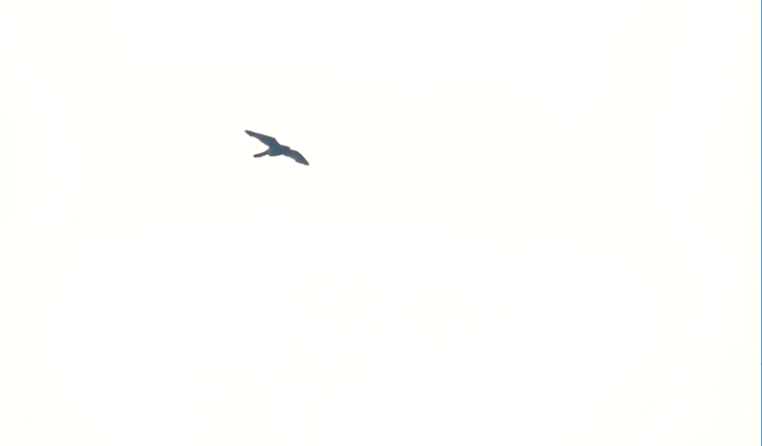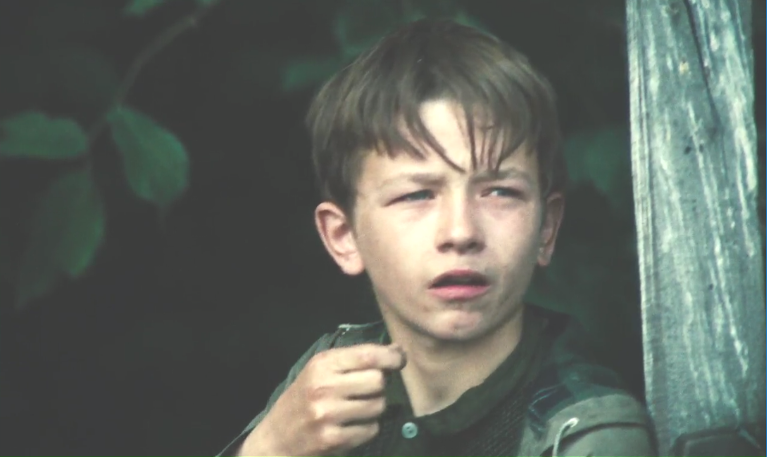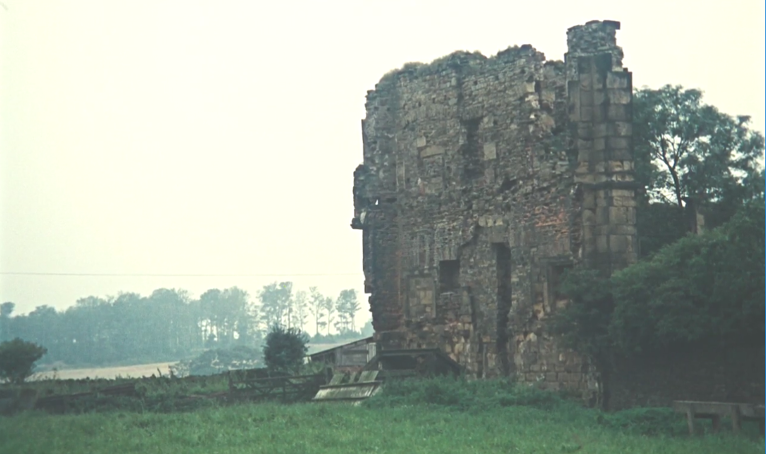Kes (dir. Ken Loach, 1969) depicts working class Billy using his kestrel training as a means of escaping the grim reality of life in the industrial north, while the juxtaposition of industry with local nature represents the man-made depression of the mining town.


In the scene we see Billy’s first glimpse of the kestrels in flight. Loach cuts repeatedly between Billy’s face and the birds. The shots of Billy’s face show a gloomy background of the woods in contrast to the bright white sky behind the kestrels, representing their freedom in contrast to his stressful life. The fact Billy’s face is shown in a close-up, static shot creates a sense of claustrophobia as if he is trapped by his industrial, working-class surroundings. In contrast, the dynamic camera following the small birds surrounded by large amounts of white space creates the sense that they are truly free as the sky is a metaphor for the lack of responsibility and complexity the life of a bird entails. Additionally, Loach’s insistence on using natural light for all shots creates the sense that the vast, white sky in which the birds enjoy freedom is looming over the miserable surroundings of the small mining town, meaning the free birds are ever-present and visible to those in the town.

When Billy interacts with the landowner later in the scene he’s told to ‘bugger off’ because its ‘private property’. The adults throughout the film oppress Billy and the fact that he is not allowed on the property when the birds can freely explore is symbolic of the constraints of human life in contrast to the birds. Furthermore, the kestrel entering flight from the crumbling building which has been weathered by nature creates the sense that man’s industrial efforts are transient and that nature is a constant, with the birds now integrating it as part of their habitat. The derelict building being guarded by the landowner seems ridiculous as the building is beyond repair which creates the sense that man is inordinately possessive of his creations, and that the focus on man-made things rather than a natural, simple existence is absurd.
By showing the kestrels as carefree inhabitants of the industrial landscape, Loach implies the depressing setting of the mining town is the fault of man himself. For instance, showing the birds moving freely in the vast white sky he conjures the image of a blank canvas of opportunity. In contrast, the busy scenery behind Billy implies he is as a child already encumbered by the realities of low socio-economic status and lack of job prospects, despite both him and the birds living in the same area. In the scene Loach is attempting to advocate his anti-capitalist viewpoint, using the juxtaposition of working class industrial exploitation represented by the building, with the more positive life of the birds who have continued their much more simple, natural existence. Using the birds to represent Billy’s freedom is ironic, however, as their freedom would need to be limited in order for Billy to have more freedom, meaning that Loach is not treating the birds themselves sympathetically but rather using them as a metaphor.